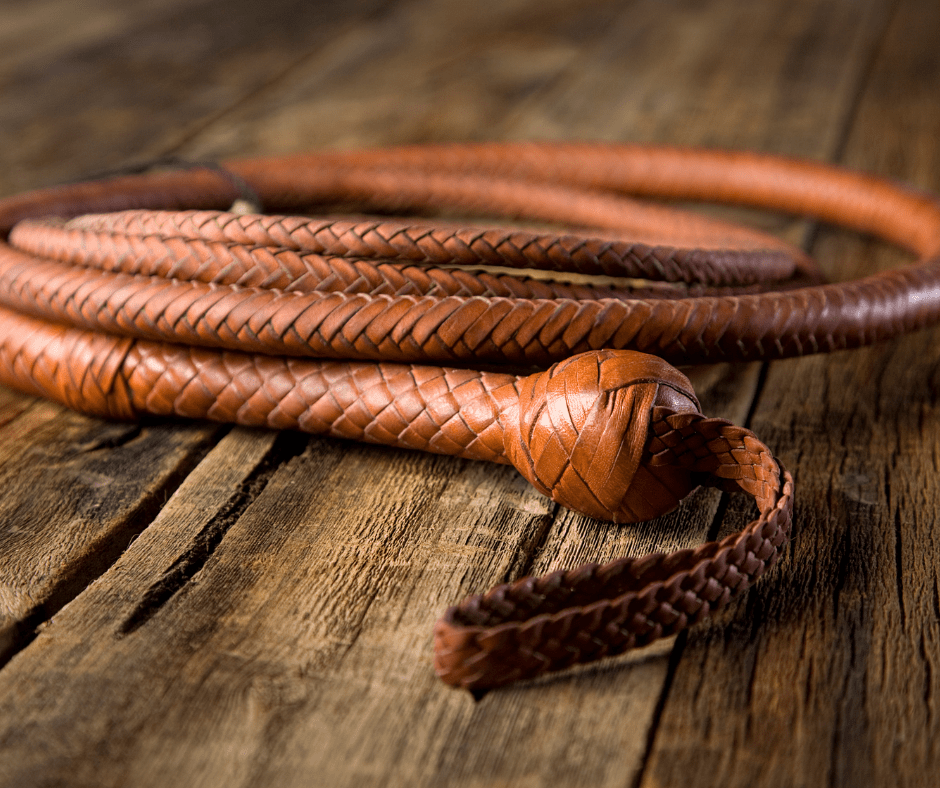Bullwhips are not only fascinating to watch, but they are also remarkable tools that have been used for centuries by cowboys, farmers, and other individuals who work with livestock. Even though your intended use may vary, these whips are still typically made from a combination of materials, including leather and nylon. They are designed to be strong, flexible, and long-lasting.
The process of making a bullwhip is a complex one that requires a great deal of skill and attention to detail.
Materials Used in Bullwhips:
-Leather is the primary material used in the construction of bullwhips. Cowhide or kangaroo hide is the most common type of leather used. The type of leather used in a bullwhip can have a significant impact on its performance and durability.
-Kangaroo leather is particularly popular among whip makers because it is both lightweight and strong. It also has a unique grain pattern that makes it aesthetically pleasing.
-Nylon is another material that is sometimes used in bullwhip construction. Nylon whips tend to be more affordable than leather whips, but they do not have the same level of quality and durability as leather whips.
Making a Bullwhip
The process of making a bullwhip typically begins with selecting the right materials. The whip maker will choose a type of leather that is appropriate for the desired length and flexibility of the whip. Once the leather has been selected, it is cut into long, narrow strips that will form the braided portion of the whip.
The strips of leather are then soaked in water to make them more pliable. The whip maker will then begin braiding the strips together, using a particular pattern that gives the whip its distinctive look and feel.
Once the braiding is complete, the whip maker will attach a handle to the end of the whip. The handle may be made from a variety of materials, including wood, bone, or plastic. The handle is then wrapped in leather or some other material to provide a comfortable grip for the user.
Finally, the whip maker will apply a finishing coat to the whip to protect it from the elements and give it a polished appearance.
If you are interested in learning more about bullwhips, be sure to do your research, both in seeking out reputable whip makers who can provide you with a high-quality product and in learning how to use this powerful implement.














